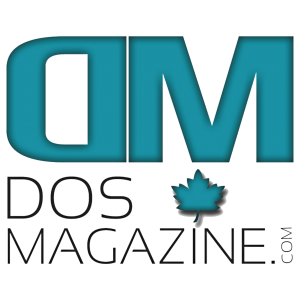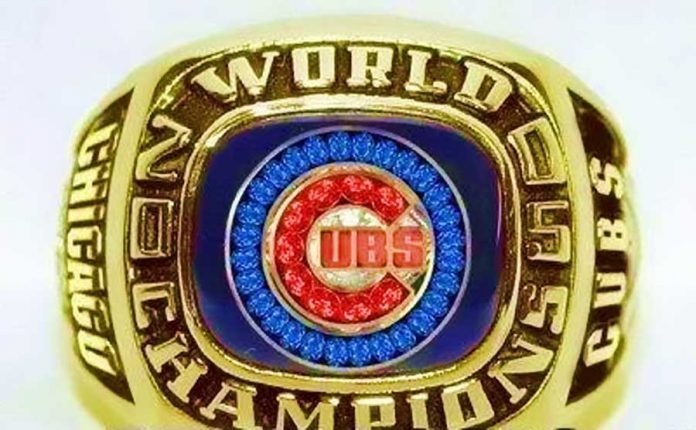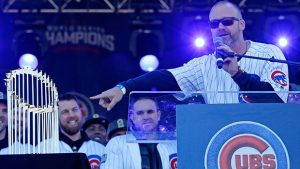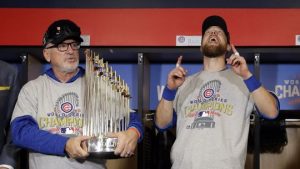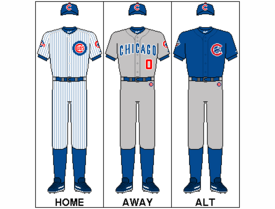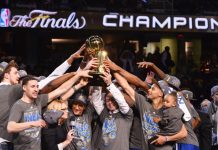Chicago Cubs win World Series championship with 8-7 victory over Cleveland Indians, for the first time since 1908.
The 2016 Chicago Cubs season was the 145th season of the Chicago Cubs franchise, the 141st in the National League and the Cubs’ 101st season at Wrigley Field. To celebrate their 100 years at Wrigley, the Cubs wore a patch on their home uniforms and wore 1916 throwback uniforms on July 6.
They began the season on April 4, 2016 at the Los Angeles Angels and finished the regular season on October 2, 2016 at the Cincinnati Reds. They finished with the best record in Major League Baseball and won their first National League Central title since the 2008 season, winning by 17½ games.
The team also reached the 100 win mark for the first time since 1935 and won 103 total games, the most wins for the franchise since 1910. The Cubs defeated the San Francisco Giants in the National League Division Series and returned to the National League Championship Series for the second year in a row, where they defeated the Los Angeles Dodgers in six games.
The Cubs defeated the Cleveland Indians in seven games in the 2016 World Series, their first appearance since the 1945 World Series and first win since the 1908 World Series.
In the World Series, they came back from a three games to one deficit, winning the final three games, the first team to come back from a three games to one deficit since the Kansas City Royals in 1985.
The World Series victory put an end to the so-called Curse of the Billy Goat.
In 1876, the Chicago White Stockings become one of eight charter members of the National League led by their president William A. Hulbert, who was also the owner of the Chicago club. A.G. Spalding is the manager when the team plays its first game in the history of the Chicago National League Ball Club that takes place on April 25. Spalding doubles as the pitcher and records the first NL shutout, a 4-0 win over Louisville. The first run in team history is scored by center fielder Paul Hines on a throwing error in the second inning.
The White Stockings go on to win the inaugural National League championship. Using nicknames such as the “White Stockings,” “Colts,” and Orphans,” the team plays in five different locations in the 1800s. The fledgling league thrived, as did the Chicago organization, becoming one of the sport’s first dynasties, winning six of the first 11 titles.
There were many players worthy of recognition, but the most enduring fixture from this era is Adrian “Cap” Anson, who set the franchise record for career hits (2,995) and managed the club for 19 years, earning him the nick name “Cap,” which was short for captain.
1876
April 25, 1876: Chicago wins its first NL game, beating Louisville 4-0. Five months later the organization won their first NL pennant.
1884
May 30, 1884: Ned Williamson becomes the first player to hit three home runs in a single game, vs. Detroit.
1897
June 29, 1897: Chicago beats Louisville 36-7, setting the club record for runs scored.
1898
April 29, 1898: First baseman Frank Chance debuts in 16-2 win vs. Louisville.
1900s, 1910s, 1920s, 1930s, 1940s, 1950s, 1960s, 1970s, 1980s, 1990s, 2000s,
2010
While most of baseball celebrated the Year of the Pitcher, the 2010 season may best be remembered as the Year of the Rookies for the Cubs. The team finished fifth at 75-87, 16 games behind the Reds in the National League Central. The Cubs never topped .500, the first time they’ve failed to do that in a season since 2002. Eighteen rookies played, including 12 pitchers. Eleven players made their Major League debuts in 2010, with the most notable on May 7 when shortstop Starlin Castro burst onto the scene. He hit a three-run homer in his first at-bat and added a three-run triple against the Reds. The six RBIs were a Major League record for a debut. Tyler Colvin hit 20 homers in his first full season, the fourth-most by a Cubs rookie, but his season ended early when he was stabbed in the chest by a broken bat Sept. 19.
Another star rookie was Andrew Cashner, part of a young bullpen, who made his ML debut May 31. The Cubs did lead the NL in quality starts but went 22-32 in one-run games, the most losses in the Majors. Carlos Marmol set a franchise mark with 138 strikeouts in relief. His 15.99 Ks per nine innings was the highest single-season mark for a ML reliever. Carlos Zambrano made news because of his absence. He threw a tantrum after one inning in an Interleague game against the White Sox, was eventually placed on the restricted list to undergo anger management. He returned to the rotation Aug. 9, and went 8-0 with a 1.41 ERA in his last 11 outings. This was to be Lou Piniella’s final season, but he began his retirement early, leaving after the Aug. 22 game to tend to family matters. Mike Quade, a Chicago area native who was the third base coach, took over, becoming the Cubs’ 51st manager. They went 24-13 under “Q,” the second-best record in the Major Leagues in the span behind the Phillies’ 27-12 mark. On Oct. 19, Quade agreed to a two-year contract with a club option for 2013.
2011
Manager Mike Quade, who grew up a Cubs fan in the Chicago area, faced an uphill battle after the first five games when the team lost both starters Andrew Cashner and Randy Wells to injuries. The team struggled to find replacements, and finished with the third worst ERA (4.33) in the National League. For the season, the Cubs were fifth in the NL Central (71-91) and 25 games behind the Brewers.
Starlin Castro was the Cubs’ lone All-Star and became the youngest in history to lead the National League in hits, totaling 207. But Castro also led the Majors in errors, and the Cubs committed the most miscues in the Major Leagues (134). Aramis Ramirez won his first Silver Slugger Award, hitting 26 homers and leading the Cubs with 93 RBIs.
Carlos Zambrano had another mercurial season, which ended for him on Aug. 12, when he left Turner Fielder after a bad game against the Braves. He did not return to pitch in 2011 and was dealt in the offseason to the Marlins.
The 2011 season did mark the return of Kerry Wood, the team’s first-round pick in 1995, who gave the Cubs a hometown discount to come back and pitch out of the bullpen. It also was general manager Jim Hendry’s last, as he was dismissed Aug. 19 after 17 years in the organization. Theo Epstein left the Red Sox and joined the Cubs in late October as the president of baseball operations, and revamped the front office, naming Jed Hoyer as general manager and Jason McLeod as scouting and player development director. Both Hoyer and McLeod had worked with Epstein in Boston. The Cubs also dismissed Quade and hired Dale Sveum as the Cubs’ 52nd manager. Epstein’s goal? To build “a foundation for sustained success.”
2012
Theo Epstein’s plan for the Cubs was to “build a foundation for sustained success.” Dale Sveum, a former big league infielder and hitting coach with the Brewers, took over as manager, and was assigned the task of changing the culture. The effort was there but often the Cubs were over-matched, and finished 61-101 for the first 100-loss season since 1966. The team went 50-31 when it scored at least four runs, and was 11-70 when scoring three runs or less.
Kerry Wood unexpectedly retired on May 18, ending a career that began in 1998 with the Cubs and was interrupted by elbow and shoulder injuries. He finished with one last strikeout. Bryan LaHair won the starting first baseman’s job after leading the Pacific Coast League in 2011 with 38 home runs, and was named to the NL All-Star team. But he was benched after the arrival of Anthony Rizzo in late June. Rizzo provided an instant boost, hitting game-winning RBIs in three of his first five games and won NL Rookie of the Month in July.
At the Trade Deadline, Ryan Dempster, Paul Maholm and Geovany Soto were dealt for prospects. Matt Garza was sidelined at that time with an elbow injury, and the Cubs struggled to fill the rotation. They used a club-record 53 players, including 20 rookies, the most since 1974. Second baseman Darwin Barney won his first Gold Glove, playing a NL record 141 consecutive games without an error. Alfonso Soriano delivered, hitting 32 home runs and driving in 108 runs. Starlin Castro reached 500 hits at the age of 22.
2014
The 2014 season was the Cubs’ first in their new Spring Training complex in Mesa, Ariz., and first for manager Rick Renteria. … Starlin Castro rebounded from a tough 2013 and was named to his third All-Star team. Anthony Rizzo was voted in by fans in Final Vote campaign. … Jake Arrieta missed the first month of the season because of tightness in right shoulder but bounced back and became the first Cubs pitcher to take no-hitters into the seventh inning three times in a season since 1950. … Javier Baez hit a game-winning home run in the 12th inning in his Major League debut Aug. 5, and Jorge Soler topped that by belting a home run in his first big league at-bat on Aug. 27. Another prospect, Kyle Hendricks, made a good first impression, posting a 4-0 record and 1.69 ERA in six August starts. … On Oct. 31, Renteria was dismissed, and three days later, Joe Maddon was hired as the new Cubs manager. Maddon had become a free agent after he opted out of his contract with the Rays. He signed a five-year, $25 million contract. … Jon Lester, lured by the prospect of winning a World Series with the Cubs, signed a five-year, $155 million contract in December.
Photos: Cubs catcher Dave Ross and the other players sang “Go Cubs Go” from the stage along with the blissed-out Chicago crowd. (Nam Y. Huh/Associated Press)
